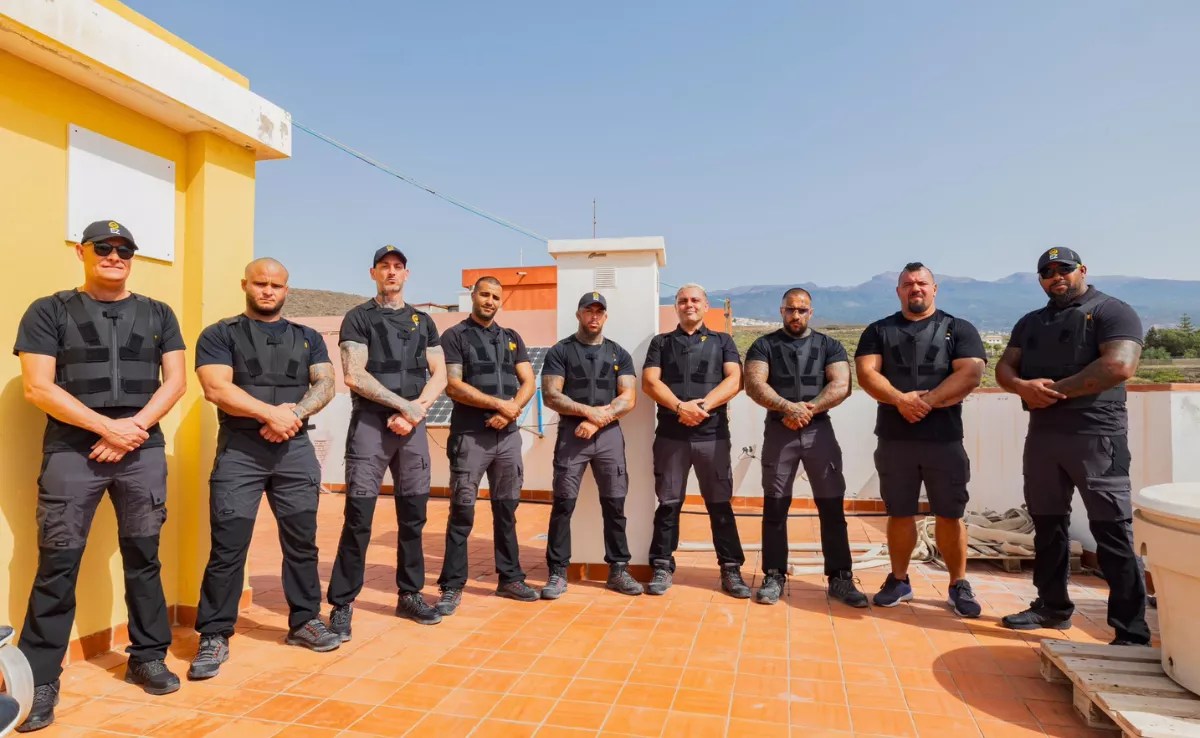The council launches a new enclosure for the rehabilitation of sea turtles in La Tahonilla and inaugurates a mural that surrounds the perimeter of the installation. This Center for the Recovery of Fauna and Flora, a global benchmark for biodiversity, is a great unknown to Tenerife society despite the fact that it is “next to home” on the La Esperanza highway, although within the municipality of San Cristobal de La Laguna.
The island president Peter Martinand the Minister for Natural Environment Management, Isabel García, who visited this abandoned nature hospital yesterday, point out that the center hosts around 1,500 animals affected by accidents or various pathologies, which are recovered in the facilities and returned to their habitat after being cured.
Martín greets the workers headed by the veterinarian Alejandro Suárez, who follows in the footsteps of the historic Santiago Mayans, and by the biologist José Alberto Delgado, a veteran of La Tahonilla with enormous experience.
The route leads to various spaces. First, the new turtle pond, then the cage, the only one in the state, where convalescent birds, shearwaters or raptors fly. In between, the dirt aisles between crops that are regenerated and then returned to the place where they were collected. The operators treat them with care. The end of the route is to explore the entrails where classics such as the Paco crow, convalescent kestrels or beaten eagles reside. The gallery of wounded animals in the Ifonche, Abama, Ucanca, Rasca rooms… A very island way of identifying the different spaces until ending up in the pantry: the mice. All this circular environment is ideal to fulfill the second premise of this center: environmental education and informative vocation. He has served with most of the members of the entourage, including administrators who belong to the same staff as biologists or veterinarians, who express their surprise at discovering an enclosure that they knew little or nothing about.
Along with the official opening ceremony of the new facilities, in parallel Three new murals made by the graphic artist Erik_Air have been presented. It has been based on the diversity and its own species that are usually attended to in the center, a painted surface of more than 400 square meters in which a tour of the different levels of vegetation and habitats of the Island is made. Erik expresses at the outset that “I did not know this, although it had happened many times.” Since December he has been working on an artistic installation that summarizes the island’s geography. From the turtle and its underwater habitat to the pine forest, passing through the guincho, cardones and tabaibas, the owl, the Canarian palm tree… The thermophilic forest and its different climatic levels before the eyes of the surprised visitor. Erik has become a bit of a biologist.
Earlier, Alejandro Suárez explains that the new facilities for the turtles are made up of several large saltwater tanks and a countercurrent swimming channel used for readjustment before returning them to the sea.
plastic pollution
“La Tahonilla offers an alternative to recover specimens belonging to the island’s own fauna”, explains Pedro Martin. For example, the turtles that arrive with problems derived from getting entangled in the sea in nets or nylon, or after having consumed plastic. Because “the presence of plastics in the sea is one of the most common reasons for turtles to enter,” says the counselor.
Politicians recall that “the service helps the population of Tenerife to be aware of the work carried out with wildlife through environmental education actions.” Martín and García sign the Visitor’s Book of Honor before leaving an installation that is surprisingly unknown. Its workers are clear about the two basic principles: conservation of wildlife and environmental education of island biodiversity. It’s La Tahonilla.
















